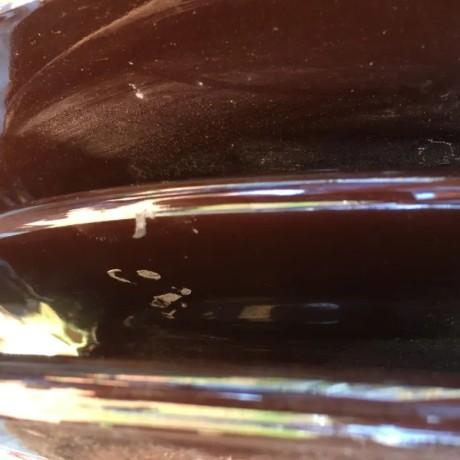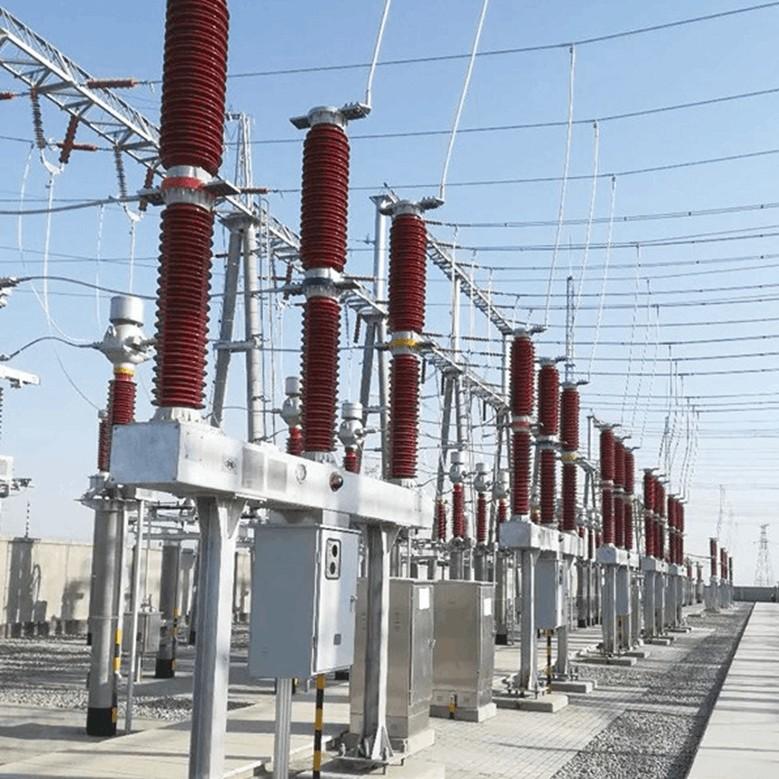How to Select and Set Circuit Breakers
1. Types of Circuit Breakers
1.1 Air Circuit Breaker (ACB)
Also known as a molded frame or universal circuit breaker, all components are mounted within an insulated metal frame. It is typically open-type, allowing easy replacement of contacts and parts, and can be equipped with various accessories. ACBs are commonly used as main power supply switches. Overcurrent trip units include electromagnetic, electronic, and intelligent types. They provide four-stage protection: long-time delay, short-time delay, instantaneous, and ground fault, with each protection setting adjustable within a range based on the frame size.
ACBs are suitable for AC 50Hz networks with rated voltages of 380V or 660V and rated currents from 200A to 6300A. They are primarily used for power distribution and protection against overloads, undervoltage, short circuits, and single-phase grounding. These breakers offer multiple intelligent protection functions and selective protection. Under normal conditions, they can be used for infrequent circuit switching. ACBs rated up to 1250A can also protect motors from overload and short circuits in 380V/50Hz systems.
Common applications include main outgoing switches on the 400V side of transformers, bus tie switches, high-capacity feeder switches, and large motor control switches.
1.2 Molded Case Circuit Breaker (MCCB)
Also known as a plug-in circuit breaker, its terminals, arc extinguishers, trip units, and operating mechanism are housed in a plastic enclosure. Auxiliary contacts, undervoltage trip units, and shunt trip units are often modular, resulting in a compact design. MCCBs are generally not designed for repair and are typically used as branch circuit protection.
Most MCCBs include thermal-magnetic trip units. Larger models may feature solid-state trip sensors. Overcurrent trip units can be electromagnetic or electronic. Electromagnetic MCCBs are usually non-selective, offering only long-time and instantaneous protection. Electronic MCCBs provide four protection functions: long-time, short-time, instantaneous, and ground fault. Some newer models include zone-selective interlocking.
MCCBs are commonly used for feeder circuit control and protection, main outgoing switches on small distribution transformers, motor control terminals, and as power switches for various machinery.
1.3 Miniature Circuit Breaker (MCB)
MCBs are the most widely used terminal protection devices in building electrical systems. They protect single-phase and three-phase circuits up to 125A against short circuits, overloads, and overvoltage. Available in 1P, 2P, 3P, and 4P configurations.
An MCB consists of an operating mechanism, contacts, protective devices (various trip units), and an arc extinguishing system. Contacts are closed manually or electrically and held in place by a free-tripping mechanism. The coil of the overcurrent trip unit and the heating element of the thermal trip unit are connected in series with the main circuit, while the undervoltage trip coil is connected in parallel with the power supply.
In building electrical design, MCBs are used for overload, short-circuit, overcurrent, undervoltage, ground fault, leakage protection, automatic transfer of dual power sources, and infrequent motor starting and protection.
2. Key Technical Parameters of Circuit Breakers
Rated Operating Voltage (Ue)
The nominal voltage at which the circuit breaker is designed to operate continuously under specified conditions. In China, for systems up to 220kV, the maximum operating voltage is 1.15 times the system rated voltage; for 330kV and above, it is 1.1 times. The breaker must maintain insulation and perform switching operations at the system’s maximum operating voltage.
Rated Current (In)
The current the trip unit can carry continuously at ambient temperatures up to 40°C. For adjustable trip units, this is the maximum adjustable current. At temperatures above 40°C (up to 60°C), derating is allowed.
Overload Trip Current Setting (Ir)
The breaker trips with a time delay when current exceeds Ir, which represents the maximum current the breaker can carry without tripping. Ir must be greater than the maximum load current (Ib) but less than the cable’s permissible current (Iz). For thermal-magnetic breakers, Ir is typically adjustable from 0.7 to 1.0In; electronic trip units offer a wider range, usually 0.4 to 1.0In. For fixed trip units, Ir = In.
Short-Circuit Trip Current Setting (Im)
The threshold at which the instantaneous or short-time trip unit activates to quickly disconnect the circuit during high fault currents.
Rated Short-Time Withstand Current (Icw)
The current the breaker can withstand for a specified duration without thermal damage.
Breaking Capacity
The maximum fault current a breaker can safely interrupt, independent of its rated current. Common values include 36kA and 50kA. It is categorized into ultimate breaking capacity (Icu) and service breaking capacity (Ics).
3. General Principles for Circuit Breaker Selection
Rated operating voltage ≥ circuit rated voltage.
Rated short-circuit making/breaking capacity ≥ calculated load current.
Rated short-circuit making/breaking capacity ≥ maximum possible short-circuit current in the circuit.
Single-phase-to-ground short-circuit current at the circuit end ≥ 1.25 × instantaneous (or short-time) trip setting.
Undervoltage trip unit rated voltage = circuit rated voltage.
Shunt trip unit rated voltage = control power supply voltage.
Electric operating mechanism rated voltage = control power supply voltage.
For lighting circuits, set instantaneous electromagnetic trip current to 6 times the load current.
For single motor short-circuit protection: 1.35× motor starting current (DW series) or 1.7× (DZ series).
For multiple motors: 1.3× largest motor starting current + sum of other motors’ running currents.
As main transformer low-voltage side switch: breaking capacity > transformer’s low-voltage short-circuit current; trip rated current ≥ transformer rated current; short-circuit setting = 6–10× transformer rated current; overload setting = transformer rated current.
After preliminary selection, coordinate with upstream and downstream breakers to prevent cascading trips and minimize outage scope.
4. Selectivity of Circuit Breakers
Circuit breakers are classified as selective or non-selective. Selective breakers offer two- or three-stage protection: instantaneous and short-time for short circuits, long-time for overload. Non-selective breakers are typically instantaneous (short-circuit only) or long-time (overload only). Selectivity is achieved using short-time delay trip units with different time settings. Key considerations:
Upstream instantaneous trip setting ≥ 1.1 × maximum 3-phase short-circuit current at downstream breaker’s output.
If downstream is non-selective, upstream short-time trip setting ≥ 1.2 × downstream instantaneous trip setting to maintain selectivity.
If downstream is also selective, upstream short-time delay time ≥ downstream short-time delay time + 0.1s.
Generally, Iop.1 ≥ 1.2 × Iop.2.
5. Cascading Protection
In system design, coordination between upstream and downstream breakers ensures selectivity, speed, and sensitivity. Proper coordination allows selective fault isolation, maintaining power to healthy circuits. Cascading uses the current-limiting effect of the upstream breaker (QF1). When a short circuit occurs downstream (at QF2), QF1’s current-limiting action reduces the actual fault current, allowing QF2 to interrupt a current higher than its rated capacity. This allows use of lower-cost, lower-breaking-capacity downstream breakers. Conditions include no critical loads on adjacent circuits (since QF1 trip would blackout QF3), and proper matching of instantaneous settings. Cascading data is determined by testing and provided by manufacturers.
6. Sensitivity of Circuit Breakers
To ensure reliable operation during minimum fault conditions, sensitivity (Sp) must be ≥1.3 per GB50054-95:
Sp = Ik.min / Iop ≥ 1.3
Where Iop is the instantaneous or short-time trip setting, and Ik.min is the minimum short-circuit current at the protected line end under minimum system operation. For selective breakers with both short-time and instantaneous trips, only the short-time trip sensitivity needs verification.
7. Selection and Setting of Trip Units
(1) Instantaneous Overcurrent Trip Setting.Must exceed the circuit’s peak current (Ipk) during motor startup:
Iop(0) ≥ Krel × Ipk
(Krel = reliability factor)
(2) Short-Time Overcurrent Trip Setting and Time
Iop(s) ≥ Krel × Ipk. Time delays are typically 0.2s, 0.4s, or 0.6s, set to ensure upstream operation time exceeds downstream by one time step.
(3) Long-Time Overcurrent Trip Setting and Time
Protects against overload: Iop(l) ≥ Krel × I30 (maximum load current). Time setting must exceed allowable short-term overload duration.
(4) Coordination Between Trip Settings and Cable Capacity.To prevent cable overheating or fire without tripping:
Iop ≤ Kol × Ial
Where Ial = cable’s allowable current-carrying capacity, Kol = short-term overload factor (4.5 for instantaneous/short-time trips; 1.1 for long-time trip as short-circuit protection; 1.0 for overload protection only). If not satisfied, adjust trip setting or increase cable size.





















